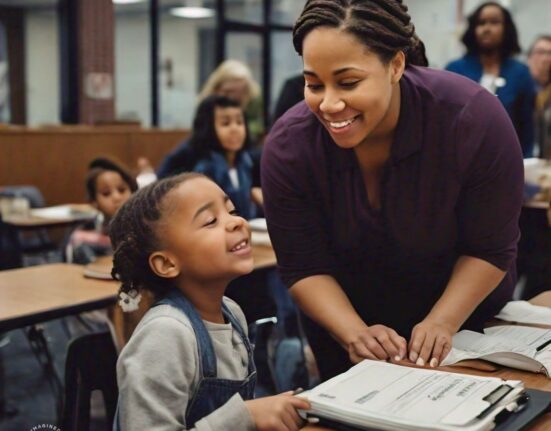National Reading Report Panel provided comprehensive discussion of research evidence in 5 areas of reading instruction: Phonemic Awareness, Phonics, Fluency, Vocabulary, and Text Comprehension.
Phonemic awareness refers to noticing, identifying and working with the individual sounds in spoken words. Before children learn to read, they must understand that words are made up of speech sounds, or phonemes. Phonemes are the smallest part of sounds in spoken words that affect the meaning of words. For example, change the ‘p’ sound to the ‘m’ sound in the word “pan” and you will get an entirely different word. Children demonstrate phonemic awareness by recognizing the beginning sounds of different words, being able to isolate the ending sounds of words, being able to blend separate sounds into a word (e.g., /m/, /a/, /p/ is ‘map’), and breaking up a word into the sounds that it consists of.
Children with good phonemic awareness skills will find it easier to learn to read, so it is an important area of practice at home.
Now, let’s determine how phonemic awareness is different from phonics.
Phonics refers to understanding of a relationship between what is written (graphemes) and what is spoken (phonemes). Thus, phonics instruction includes teaching children to recognize written letters and the sounds made by them.
If a child struggles with phonemic awareness (see above), phonics instruction will be impacted negatively.
Fluency refers to the ability to read a text accurately and quickly, it serves as the connection between recognition of words and text comprehension. Fluent readers do not have to concentrate on recognizing individual words, instead they can focus on understanding the meaning of texts. Fluency is a skill that develops over time and requires substantial practice. As per the report of National Reading Panel, fluency is a skill that is often neglected in American classrooms. Repeated and monitored oral reading improves reading fluency and reading achievement, so the approach is essentially to have a student read and re-read a specific text until a desirable level of fluency has been achieved. Modeling fluent reading for the students is also very important. And not surprisingly, independent silent reading with no feedback regarding fluency does not help to increase the level of fluency in reading.
Vocabulary refers to knowledge of the words that we need to use to be able to communicate effectively. Research on vocabulary development demonstrates that most vocabulary is acquired indirectly, however some vocabulary must be taught directly. Important vocabulary taught before reading comprehension activity is a significant aid to students. Repeated exposure to new vocabulary across different contexts helps students to better learn word meanings. Teaching children to use context clues is an important aspect of vocabulary instruction since most vocabulary is learned by children indirectly. Children who are encouraged to read on their own and indeed do read on their own perform very well on this metric of reading achievement.
Comprehension – is the very reason for reading, and good readers always have a purpose for reading. You may read to find out important information about a landmark you’re going to visit or to familiarize yourself with college admission requirements. Whatever your purpose is, there is one, that’s for sure.
Comprehension involves conscious steps that need to be taught to children. Without these steps, it will be difficult to make good sense of the text. Monitoring your comprehension is a very important step, as it enables students to discern what they understood from what they didn’t understand. Consequently, if there is a problem with comprehension, a student is able to fix it if they were monitoring their comprehension in the first place. Using graphic organizers in order to aid comprehension is also a useful strategy. Other strategies that support text comprehension are generating questions, answering questions, understanding story structure, and summarizing.
Whether you choose to teach your child how to read on your own or delegate this task to early childhood educators, HERE is a list of must-have books for the young child. Many of the items from the list are included in the UPK curriculum, and by purchasing and exposing your child to these authors and titles you will make sure your little one is well ahead of the game plan in preK.






